How to bleed air from the boiler
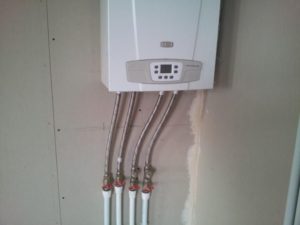 The operation of water heating systems may be accompanied by air entering the internal cavity of pipes, radiators and the heat source. The occurrence of an air lock leads to a change in the parameters of the coolant in individual areas or throughout the heating main. Airing the boiler can lead to overheating of the heat exchanger and failure of the heating equipment. Each user of an autonomous heating system must be able to independently get rid of traffic jams that occur inside the water system.
The operation of water heating systems may be accompanied by air entering the internal cavity of pipes, radiators and the heat source. The occurrence of an air lock leads to a change in the parameters of the coolant in individual areas or throughout the heating main. Airing the boiler can lead to overheating of the heat exchanger and failure of the heating equipment. Each user of an autonomous heating system must be able to independently get rid of traffic jams that occur inside the water system.
The content of the article
How to bleed air from the boiler
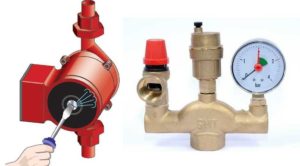 Modern heat sources are equipped with automatic air ventilators or Mayevsky taps located in the upper part of the unit. This design solution allows you to bleed air during operating mode without stopping the process of heating the room, just like with any radiator on which a similar valve is installed.
Modern heat sources are equipped with automatic air ventilators or Mayevsky taps located in the upper part of the unit. This design solution allows you to bleed air during operating mode without stopping the process of heating the room, just like with any radiator on which a similar valve is installed.
To do this, periodically open and close the Mayevsky tap, with an interval of several minutes. The procedure is repeated until a hiss or whistle appears, indicating the release of the air lock. The appearance of sound requires holding the bleeder in the open position until the coolant appears.
ATTENTION! The automatic air vent must itself rid the boiler of plugs while the unit is operating.But if you manage to bleed air from the heat exchanger after pressing the spool located under the cap of this device, then this indicates a malfunction of the air vent!
The lack of special devices for removing plugs on the boiler requires the use of the same devices on pipelines located above the heat source.
REFERENCE! Properly installed autonomous and stationary heating systems are equipped with bleeders at the highest points of the lines and next to all devices that produce or give off heat!
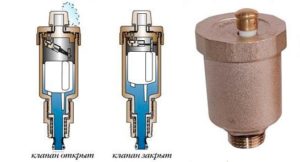 The ideal conditions for freeing the air lock in the boiler is the possibility of separately shutting off the heat source circuit with the return pipe and circulation pump. When turned on, the coolant is pumped, and periodic opening of the Mayevsky tap or monitoring the operation of the automatic air vent by pressing the spool allows the blocked circuit to be released from the plug.
The ideal conditions for freeing the air lock in the boiler is the possibility of separately shutting off the heat source circuit with the return pipe and circulation pump. When turned on, the coolant is pumped, and periodic opening of the Mayevsky tap or monitoring the operation of the automatic air vent by pressing the spool allows the blocked circuit to be released from the plug.
If there is no circulation pump in the closed circuit that cuts off the boiler with the return pipeline, then turn on the energy source: gas, electricity, and in the case of solid fuel, light the firebox. After heating the “supply” pipeline, the deaerator is periodically opened. The coolant, heating up, will rise from the boiler along the main line due to heating and return through the connecting pipeline - back to the heat exchanger. This technique requires careful monitoring of the temperature, especially when servicing a heat source other than solid fuel. The movement of coolant along such a circuit will be very slow and this is taken into account when performing work.
If it is not possible to shut off the boiler water circuit and there are air vent devices only in the upper part of the line, it is necessary to drain the coolant and then fill in the entire required volume of water. Before embarking on such global measures, it is recommended to turn off all devices (except the boiler) and, turning on the pump, release the pressure through the nearest air vent on the main line until sound or bubbles appear. The absence of a result indicates the need to completely drain the coolant.
IMPORTANT! A plug may form not in the boiler itself, but inside the pump, which is built into the body of the unit! To get rid of the air that has formed in the impeller cavity, unscrew the central screw of the pump 1-1.5 turns and back until bubbles appear!
Reasons for air getting into the heating system
The formation of traffic jams can be caused by various reasons; let’s consider them in more detail.
- Lack of tightness of joints of installation connections. This reason is especially often the initial one when operating systems without pressure. A small water leak is not visible and borders on possible evaporation. At the point of a loose connection, air is sucked in and accumulates in the free cavity of the line, forming a plug.
- Inaccuracy in the design or installation of pipelines, which entails the creation of unwanted “loops” that inhibit the movement of the coolant, entails the accumulation of air in such circuits.
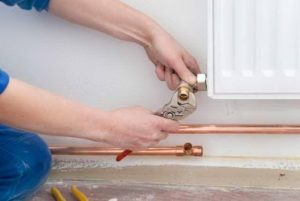
- The low-tech method of filling the system with coolant also causes plugs. Very fast or top-down directed filling of lines contributes to the formation of air gaps that interfere with normal operation.
- Faulty operation of automatic air ventilators located on the upper pipelines provokes the creation of traffic jams.
- Poor installation of pipes with the formation of wavy lines (relative to the horizon) is a common and difficult to determine cause of the appearance of air. Elimination of such a cause requires periodic removal of plugs, and complete elimination requires repair of a separate section, with the possible installation of additional devices for air removal.
- Overheating - this reason is typical for solid fuel units. When water boils, air bubbles form in the internal cavity and accumulate in the boiler heat exchanger.
ATTENTION! Bleeding air while the boiler is boiling is dangerous! There is a high risk of scalding and burns!
What are the risks of air jams?
The presence of air in the lines will not allow the radiators to be supplied with the required amount of coolant, which means that the heating devices will not produce the required heat and the room temperature will be lower than desired. The noise inherent in overcoming an air obstacle in the system will not cause irritation during the day, but at night it will prevent you from falling asleep. In places where traffic jams form, the internal environment becomes aggressive, which contributes to the active formation of rust.
The most unpleasant thing is overheating. The presence of air in the heat exchanger or heat “supply” pipeline will impede the movement of the coolant, and an increase in temperature can damage the coil or pump.
The ability to bleed air from a boiler or individual areas will allow owners of private houses with autonomous heating to get rid of traffic jams on their own, preventing harmful consequences, without resorting to the help of service providers.

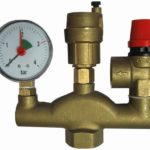
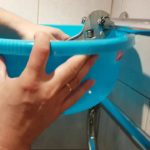


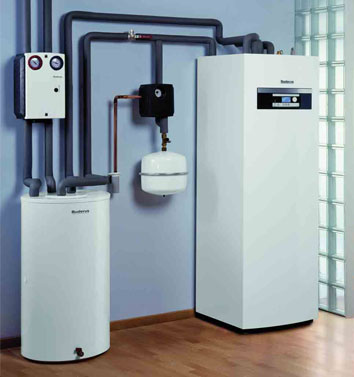
We need to bleed the air from the gas boiler, we can’t do it ourselves, we need a system specialist, that’s what they said!